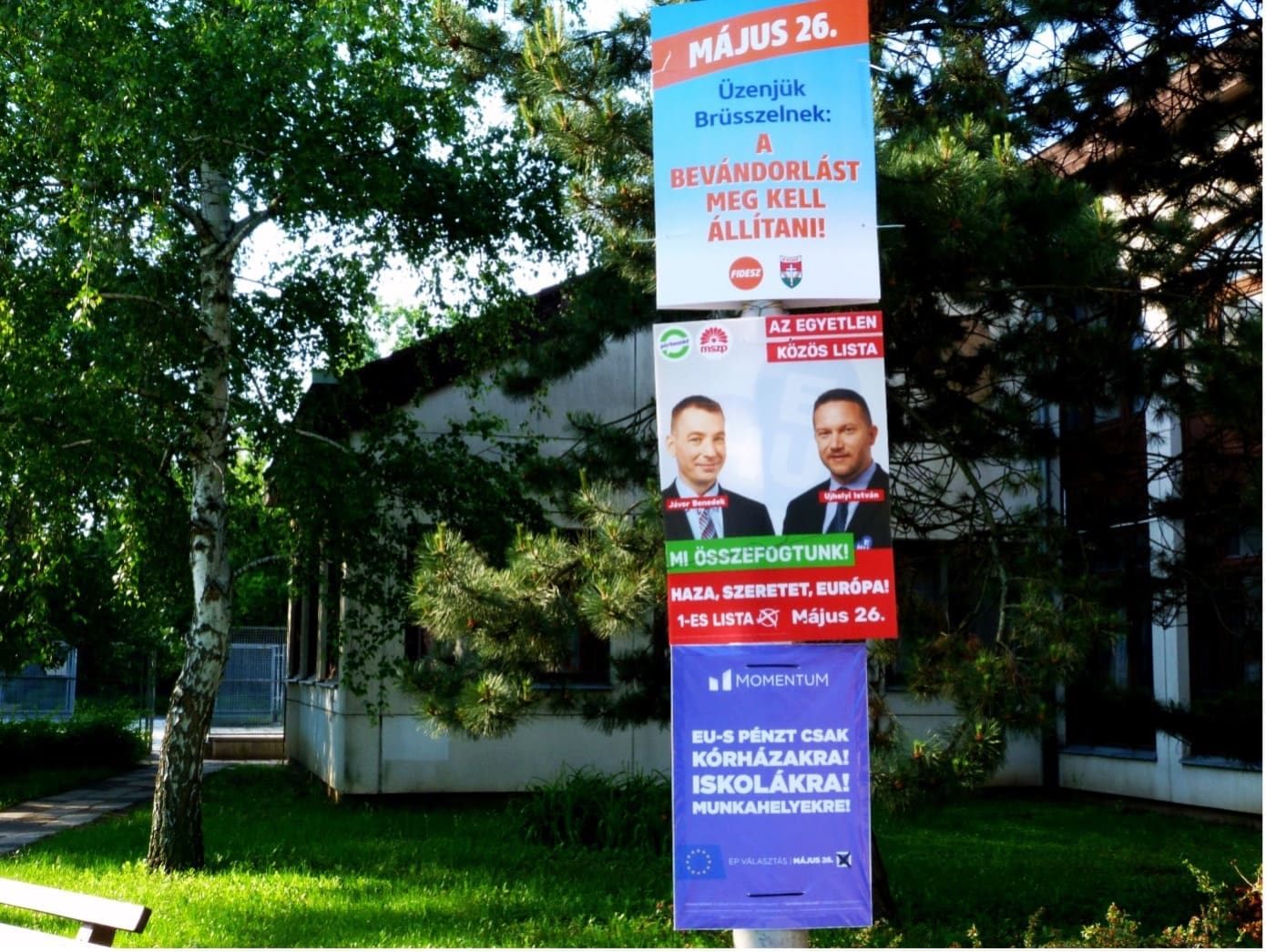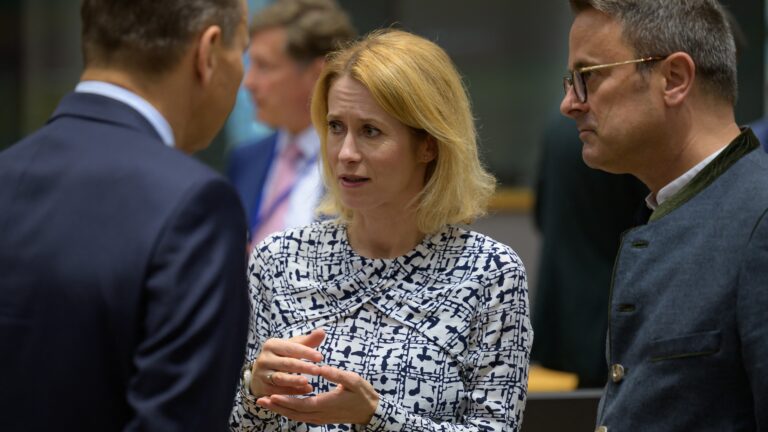The Hungarian party system started to develop in February 1989 when the Hungarian Socialist Workers’ Party (MSZMP) formally accepted the principles of multiparty democracy. Soon, informally existing political groups institutionalised, interwar parties were revived and many new parties were rapidly established. In the spring of 1990, the new parties engaged in the first competitive, democratic and free election in the country’s history. This article is dedicated to discussing how Hungarian left-wing parties evolved over the last 30 years of multiparty competition.
As the state-socialist regime in Hungary started to disintegrate, the MSZMP, the former state-socialist ruling party found itself at crossroads – be banned and disappear, or reform, accept the new democratic rules and reinvent itself. Just like most other former communist parties in the region, the MSZMP choose the second option. As a result, the Hungarian Socialist Party (MSZP) was born as a successor party of the MSZMP. It inherited its structure, members and party elite from the former ruling party – the last president of the MSZMP was the same person as the first president of MSZP: Rezső Nyers.
Although most of MSZMP’s wealth was used to fund the other newly established parties, MSZP could still manage to inherit considerable reserves from the MSZMP
The shadow and connections to the former regime and party elite led to some disillusionment with the newly established party, but it also gave some advantages to MSZP. Although most of MSZMP’s wealth was used to fund the other newly established parties, MSZP could still manage to inherit considerable reserves from the MSZMP.[1] It also had an easy access to the media, as before 1989 only pro-government outlets were allowed to publish, the MSZP had a media base as opposed to any other parties, which had to build up their news networks gradually. Despite these initial advantages, due to the negative perception of the one-party system, the popularity of MSZP was low – it collected only 33 seats (out of 386) in the first democratically elected Hungarian parliament.
The other major left-leaning party of the 1990s was the Alliance of Free Democrats (SZDSZ). It had very different origins from MSZP as it was in informality with its members regularly prosecuted during the state-socialist period. Albeit informally, the SZDSZ came into being in the 1970s; at the time it operated mostly as a small and illegal oppositional group. From 1981 on, it published a famous samizdat, Beszélő. It was an illegally released paper, namely the first publication to cover political issues in an uncensored way in Hungary. As the transition approached, SZDSZ found itself to be one of very few established and organised oppositional groups. They used the momentum to play a significant role in negotiating the conditions of the transition from state-socialism to democracy, participating in the round-table discussions, which defined the terms of the regime change.
SZDSZ’s most significant achievement was winning on all four questions of the referendum of 1989. After the referendum, MSZMP was banned from workplaces, it was deprived of most of its financial resources; furthermore, SZDSZ also achieved to postpone the presidential elections. On practical terms it meant that the Hungarian president was not elected by popular vote (as MSZMP wanted), but was chosen by the parliament. It was a significant achievement for SZDSZ because if the presidential role was put on popular vote, the reform communist Imre Pozsgay would have won the elections, since he was one of very few well-known and tenured politicians in the country. As after the referendum the president became electable by the parliament, SZDSZ had a better chance to see its own figure put into power. They did succeed in it, as after negotiating with the Hungarian Democratic Forum (MDF)—the first democratically elected governing party of Hungary between 1990–94—their candidate, Árpád Göncz became the president of Hungary.
The first election in Hungary was won by the centre right MDF, which was the only government in the region that did not collapse under the pressure of the transition, but managed to fill out its four-year-long mandate. Nevertheless, orchestrating the reform process and witnessing the sudden decline in living standards, which was associated with the transitionary shock, was a political suicide for MDF. As a result of the failure of the other political side, MSZP could start re-building its political reputation in 1993. The attempt was successful, and it resulted in MSZP’s first electoral victory in 1994 (the party received three and a half times more votes in 1994 than in the previous elections[2]). The triumph was due to the disappointment with the transition process, which led to a financial recession in the country. Amidst rising unemployment and declining living standards the electorate found the memory of the previous regime’s social stability appealing, even though MSZP never promised (or dreamed of) returning to the previous system. Although MSZP won the majority, it decided to build a coalition government with its main competitor, SZDSZ, to reduce the fear that it will try to return the country to the past system.
The MSZP–SZDSZ mandate between 1994–1998 was marked with austerity. As the country was on the brink of default, the so-called ‘Bokros-package’ (an austerity ‘package’ named after Lajos Bokros, the minister of finance) was introduced causing a huge national uproar. On the one hand, the ‘package’ did restore the country’s solvency, on the other hand, it drastically reduced living standards. The restructuring of family allowances, the introduction of tuition fees in higher education caused huge scandals in the country and sealed the association between MSZP and austerity for a long time. The financial hardship also gave an easy chance to the opposition to gain popularity. Narrowly, but the 1998 elections were won by Fidesz. MSZP had to move back to opposition, but it could preserve its status as a major political force in Hungary. At the time it seemed that Hungary will be a two-party system in which Fidesz and MSZP struggle against each other for governance.
After a brief four years of Fidesz government, MSZP could come back to power in 2002. Their started off their mandate with the ‘hundred-day-programme’, increasing social expenditure and the size of the state. Although the programme did not bring structural changes in the distribution of wealth as it was hoped, the costs were running extremely high. Upon all these financial challenges came Prime Minister Péter Medgyessy’s scandal due to his involvement in the state-socialist era secret agency. He was charged with reporting about his colleagues to the Soviet Union, and eventually he had to resign in 2004. The newly appointed prime minister, Ferenc Gyurcsány, was acknowledged as a positive development by the electorate, who saw him as a fresh, new and charismatic figure in politics. He modernised and rebranded the party, and with a couple of generous welfare promises Gyurcsány managed to win the 2006 elections.
The promises and the increased welfare spending soon turned out to be unsustainable. Right after the vote, promises were rolled back, and some taxes were increased, leading to the electorate’s disillusionment. Addressing the sudden drop in their popularity, Gyurcsány decided to have a talk with the inner circle of his cabinet. The recording of the meeting was leaked to the public and became known as the ‘Őszöd speech’. In the speech the then prime minister, Ferenc Gyurcsány used a rather obscene language to describe the party’s mistakes and hesitancy to keep its promises. The scandal induced by the speech continue to hunt him; and it also contributed to his resignation a while later.
Gyurcsány’s resignation came in economically tumultuous times as the financial crisis of 2008 already started to cause economic difficulties in the world as well as in Hungary
Gyurcsány’s resignation came in economically tumultuous times as the financial crisis of 2008 already started to cause economic difficulties in the world as well as in Hungary. The austerity programme, which was the reaction to the financial crisis in Hungary, was designed by the new prime minister, Gordon Bajnai. Obviously, it did not help to break the association between MSZP and austerity, which came about in the 1990s. Gordon Bajnai was rather unwilling to run for prime minister in 2010, as an economist he accepted the role of prime minister only to deal with the crisis and not to be involved in political battles. Nevertheless, MSZP hoped to regain its popularity through the prime minister’s crisis management. As MSZP badly lost the next (three) elections against Fidesz, these hopes remained unfulfilled. After all, the failures and disappointments of the 2000s and Fidesz’s two third majority wins ended up fragmenting the Left giving rise to many small left-leaning parties.
Politics Can be Different or since 2020, Hungary’s Green Party (LMP) was the first to came about and gain some, although limited, popularity. It is a green party, which was established in 2009 and made it into the parliament a year later. As in 2013 LMP declined to cooperate with an attempt to pull together the opposition, a significant proportion of its members left the party and established, “Hungary’s new green party”, the Discourse for Hungary (PM). LMP was not the only party to break up around that time, Gyurcsány had also left his previous party MSZP in 2011 to establish his own party called Democratic Coalition (DK). Now DK’s candidate for prime minister is Klára Dobrev, Gyurcsány’s wife. The newest addition to the left-wing political landscape came in 2017 with Momentum, which is a left-wing progressive party, mostly building on a young supporter base.
To end the fragmentation of the Left and have better chances of performing well on the elections multiple attempts were made to pull together the above-described small parties. On the 2014 elections (which was the first elections under the new electoral rules reducing the seat in the Parliament from 386 to 199 and ended the two-round elections) five oppositional parties banded and run together, but even this was too little to achieve any significant successes. The willingness to cooperate was a little bit less on the 2018 election, so the fragmentation of the opposition remained high, and left-wing successes remained low. Interestingly, it resulted in Jobbik coming second after Fidesz, which means that currently the two biggest parties in the Parliament are both right-wing. How will or will not this outlook change the next election, in April 2022, will be seen in due time.
[1] Zoltán Lakner, ‘Rendszerváltó utódpárt – Az MSZP és a demokratikus kísérlet harminc éve’, https://szocialis.eu/tanulmanyok/Lakner_Rendszervalto%20utodpart.pdf, accessed 25 Jan. 2022.
[2]Zoltán Lakner, ‘Rendszerváltó utódpárt – Az MSZP és a demokratikus kísérlet harminc éve’, https://szocialis.eu/tanulmanyok/Lakner_Rendszervalto%20utodpart.pdf, accessed 25 Jan. 2022.








